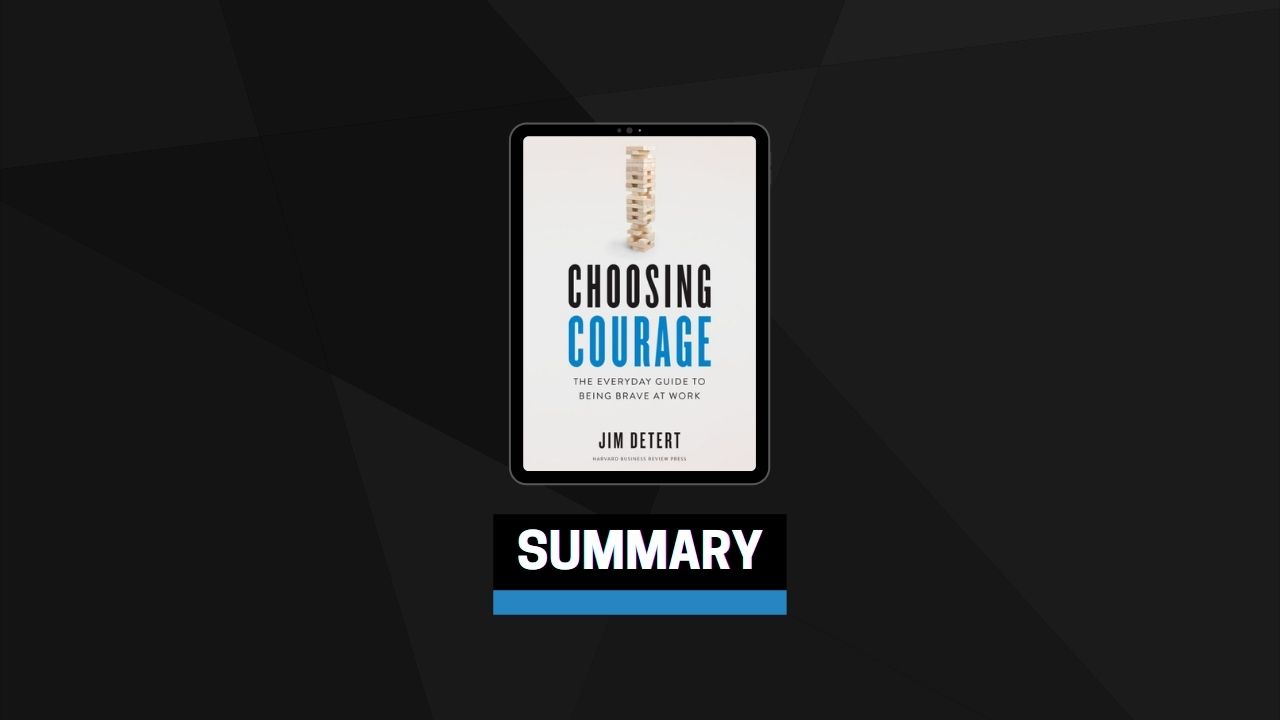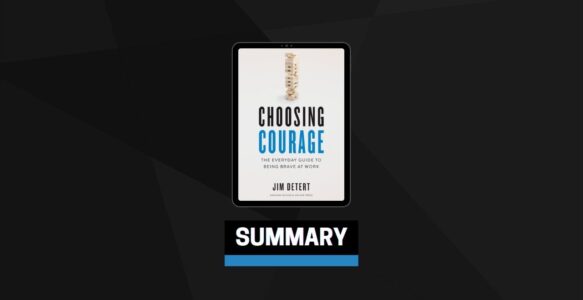Choosing Courage
Workplace courage is about taking action at work on behalf of a principle, a cause, or a group of others, even though one knows there could be serious career, social, psychological, and even physical risks for doing so.
Courage is risky, but it’s also hugely important for ourselves and for others. Choosing courage in key moments helps us build the legacy we want and avoid the regrets we don’t want. Acts of courage at work can protect others, help solve problems and avert disasters, and lead to opportunities seized and to various forms of innovation and growth. Courage acts also impact how others feel and behave. They can inspire commitment, bolster trust, and lead others to act more courageously.
The lack of courage permeates all levels of organizations, but so do positive examples from people who differ on every conceivable characteristic. Thus, thinking about courage as constituting specific acts, not an innate characteristic of a limited number of people, helps us recognize that we all share responsibility for being courageous and that skill comes from preparation and practice.
Truth to Power
Fear of speaking up and engaging in other acts that might anger those with more power than us is widespread, for both real and imagined reasons. That’s why truth to power is the prototypical form of workplace courage.
People of all types nonetheless do demonstrate these courageous behaviors in all kinds of workplaces. They speak truth to direct bosses and skip-level leaders, they use their own judgment in ways that might anger authorities, they defend others from those in power, and they admit mistakes despite the potential for trouble.
While bad things do sometimes happen as a result of challenging power, good things also happen. Outcomes depend not just on how those in power react, but also on how you do what you do.
Candid Conversations and Bold Actions
Interactions with all kinds of stakeholders sometimes present opportunities for courage. Even when we’d just be “doing our job,” decisions and conversations involving subordinates, peers, clients, and others are often deemed sufficiently risky and difficult that they don’t happen with regularity.
While nearly everyone espouses the value of personal growth and organizational innovation, the behaviors that lead to these are often seen as requiring significant courage and therefore often left undone. For those who embrace the challenge, there tend to be few long-term regrets.
Opportunities for workplace courage are often chances to put your values on the line or, as Patrick Lencioni says, “make your values mean something.” If you won’t accept the pain or loss that may be associated with defending your values, they’re just espoused or aspirational values, not core or in-use values.
Building Your Courage Ladder
You develop the skills to act competently in courageous situations by practicing those skills regularly, not by reading or thinking about them.
Everyone’s courage ladder is different because the specific situations we fear and skills we need to develop to tackle them successfully vary significantly across individuals. But all of us have things we can identify and order by degree of risk and difficulty on a courage ladder. Pretending this isn’t the case is only an excuse to keep from getting started.
Taking small steps from the bottom rungs of your courage ladder increases the odds you’ll have some success, thereby building self-efficacy and sustaining your motivation to keep tackling tougher situations. Even if things don’t go well, you’ll learn, you’ll get more comfortable with discomfort, and you’ll increase your resilience.
Creating the Right Conditions
Your odds that people will see your courageous act as well-intentioned and worth acting on are higher if you’ve spent time establishing your warmth and competence beforehand.
While your intellectual intelligence may bolster the rationale for your actions, your emotional intelligence is likely the more important factor in how your courageous acts play out. Likewise, being seen as fair and able to see both sides is likely more important than being the smartest or most assertive person who is obviously on just one side.
Because we can never fully control how others react to our courageous acts, it is difficult to eliminate all risks. It is therefore wise to take steps to mitigate the size or impact of those risks by doing things that maximize our internal job security and external job mobility.
Managing the Message
Beyond the what of your message, who delivers it and where it gets delivered can make a big difference in the reception. Consider inviting others to help and think through the best place and time to make your case.
The same message can be framed in ways that are less likely to offend and more likely to resonate with the target(s). People are more likely to accept your message when they believe you want to build on their prior efforts, include them in the future, and help them achieve their current priorities.
Some people are more inspired by opportunities; others are more reactive to threats. Some people are driven to protect and promote personal or organizational values; others are more responsive to instrumental objectives in work settings. Studying prior responses of your target(s) helps you frame your messages in ways most likely to compel action.
Channeling Emotions
Emotional intelligence is not the lack of emotions. Emotions are key to human connection and successful persuasion, so the goal is not to eliminate them. The goal is to have your emotions be the motivation for action, but not the driver of how you behave.
Perspective taking isn’t just a nice thing to do. It conveys respect, increases understanding, and helps us to give our own perspective in ways that increase the chance of acceptance.
Keep it behavior-focused, specific, and do it in person. Generalities that imply character faults tend to land poorly, especially when conveyed well after-the-fact. Stick to the specific behavior, without attributions around intent, and do it in person as soon as possible so your meaning and intent are easier to understand.
Taking Action after the Act
What you do after your initial action is also a critical part of being competently courageous. Following up to garner specific commitments, set specific timelines, and agree on specific goals and metrics is critical to turning your courageous act into meaningful outcomes.
Addressing negative or uncertain emotional states is also critical follow-up work. Sometimes our initial courageous act requires another one in the form of approaching those who are hurt or angry about what we said or did.
Persistence is needed to see through almost any systemic or deep-seated behavior change. If you’re only willing to give it one try, you might be better off not acting at all in many cases.
Cultivating Courage
Like any skill, competent courage comes from significant practice. We develop mastery over difficult, fear-laden situations by carefully exposing ourselves to, not avoiding, these situations.
Increased competence in courageous situations can come through three types of changes: improvements in how we think before and during stressful moments, improvements in our behavior due to mastery of new communication tools, and improvements in how we handle the physiological reactions that can undermine our desired behavior.
Setting SMART goals with implementation intentions can help make your desired changes a reality. Making your goals public can increase your motivation and your ability to learn from and with others.
It’s Up to You
Are you willing to do the hard work of preparing yourself for moments of courageous action, to take steps to maximize your ability to act competently and confidently, and to do so with the best possible chances of success? And are you willing to act despite the risks that will always remain, choosing to stand for things that are more important to you and others than your personal success or popularity?
The irony in this all is that while courageous action should be done in the services of others, for principles more noble than self-interest, in the end it really is about yourself. It’s about your choice to do what it takes to respect yourself even if not everyone else does. It’s about the regrets you will or won’t have. It’s about knowing that in twenty years, you will be “more disappointed by the things you didn’t do than by the ones you did.”


